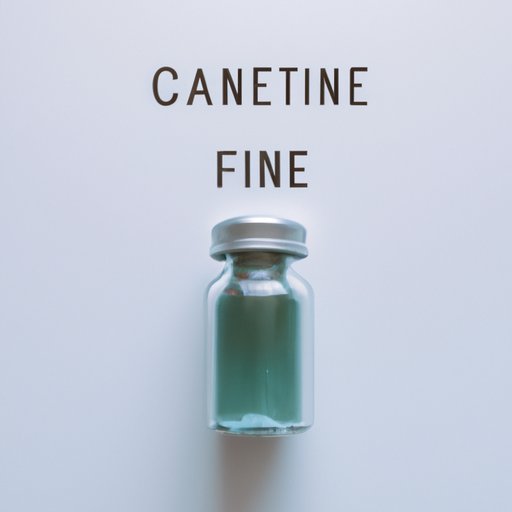
Introduction
Caffeine is a widely used stimulant that can provide a quick boost of energy and mental alertness. However, consuming too much caffeine can lead to unpleasant side effects such as jitters, anxiety, and restlessness. In this article, we’ll provide helpful tips for getting rid of caffeine jitters, including drinking water, eating a healthy breakfast, trying alternative beverages, exercising, reducing caffeine intake, and using relaxation techniques.
What are Caffeine Jitters?
Caffeine jitters are a common experience for people who consume too much caffeine. Symptoms include nervousness, trembling, restlessness, and a rapid heartbeat. These sensations occur because caffeine stimulates the body’s nervous system, triggering the release of adrenaline. While a moderate amount of caffeine can improve cognitive performance and mood, too much can cause unpleasant effects.
Drink Water to Hydrate and Wash Out Caffeine
Caffeine can cause dehydration, leading to more jitters and other side effects. To combat this, it’s important to drink enough water to help flush out caffeine from the body. A good rule of thumb is to drink at least eight glasses of water per day, but it’s especially important to drink more when consuming caffeine. Setting reminders or keeping a water bottle nearby can help ensure you’re drinking enough water throughout the day.
Eat a Healthy Breakfast with Protein
Eating a meal with protein can help regulate blood sugar levels and reduce jitters. Some healthy breakfast options include eggs, oatmeal with nuts, or a protein smoothie. Avoid sugary or high-carbohydrate breakfasts, which can cause a spike and then drop in blood sugar, leading to more jitters.
Try Alternatives to Caffeinated Beverages
Switching to decaf coffee or tea, or trying herbal tea or water infused with fruit for flavor can reduce caffeine jitters. Decaf coffee and tea contain only a small amount of caffeine, while herbal tea and infused water provide a flavorful alternative without any caffeine. Experiment with different flavors and find one that you enjoy.
Exercise to Burn off Excess Caffeine
Moderate exercise can improve blood flow and help burn off excess caffeine. Some easy exercises to try include walking, biking, or yoga. Movement helps to release endorphins, which can help reduce anxiety and promote relaxation.
Take Breaks and Reduce Caffeine Intake
Taking breaks and cutting back on caffeine can help avoid overstimulation. Gradually reducing caffeine intake can also help alleviate jitters and other side effects. For example, try slowly decreasing the number of cups of coffee or tea you drink each day.
Use Relaxation Techniques to Reduce Anxiety
Reducing anxiety can help reduce caffeine jitters. Try relaxation techniques such as deep breathing exercises, guided meditation, or progressive muscle relaxation. These techniques can help calm the mind and promote relaxation, allowing the body to come down from caffeine-induced symptoms.
Conclusion
In conclusion, caffeine jitters can be an unpleasant side effect of consuming too much caffeine. However, by staying hydrated, eating a healthy breakfast, trying alternative beverages, exercising, reducing caffeine intake, and using relaxation techniques, you can reduce the effects of caffeine and feel more calm and relaxed. It’s important to experiment with different strategies to find the ones that work best for you. Don’t give up, and keep trying until you find a solution that works.





